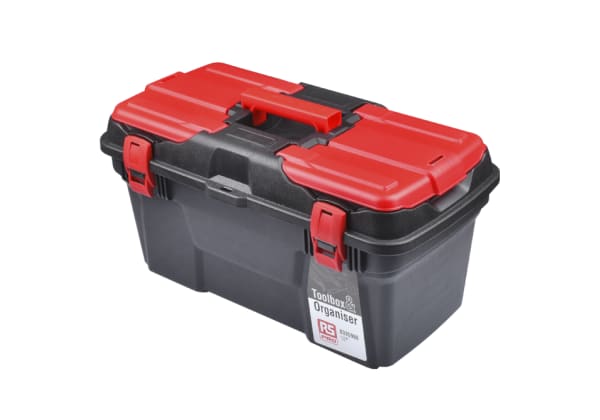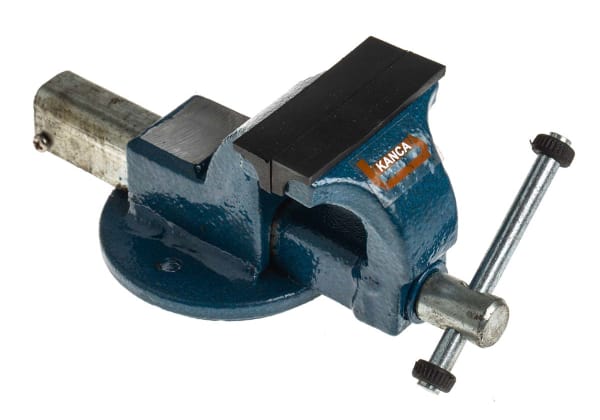- Published 9 Jan 2025
- Last Modified 9 Jan 2025
- 6 min
Guide To Lathes and Lathe Tools
What is a lathe? Lathes enable cutting, shaping, turning, and boring of metal, wood, and plastic. This guide covers how they work, types of lathe tooling, tool sharpening and care.
Reviewed by Karl Ralph, Technical Support Engineer (December 2024)
Lathes are essential machine tools used by industry, craftspeople, and hobbyists alike. They turn metal, wood, and plastic into machined parts. With an illustrious history, today, computer-controlled lathes are the powerhouses of factory shop floors, employing ultra-durable tooling to shape parts for automotive and aerospace applications.
If you’ve ever wondered about what lathes do, or what are lathe tools, we’ve got you covered. Read on.
What is a Lathe?
Just what is a lathe and what are lathes used for? A lathe is a tool for shaping materials like wood or metal. Lathes make everything from musical instruments to furniture parts, automotive components, and screws by rotating the workpiece around a cutting tool to remove material. The operations that can be performed on lathes are varied. They include turning, facing, threading, drilling, boring, tapping, facing, and knurling.
The modern lathe was invented in the early 19th century. Today, the computer numerically controlled (CNC) lathes used in manufacturing are capable of handling huge volumes of parts, while watchmakers continue to use lathes for precision machining of the tiniest components. Lathes are also widely used in woodworking, metalworking, and toolmaking.
Lathes are notable for their versatility. They are able to create customised shapes and may be cheaper options for producing small batches of parts than bespoke machinery. They can also work with a range of materials, including not just metal and wood but also plastic and composites. There are a variety of lathe types out there, including:
- CNC lathes. Computer-controlled lathes perform high-precision machining tasks that are impossible with manual lathes (or would take much longer). CNC lathes are used in industries such as aerospace and automotive where complex parts are needed in large volumes.
- Turret lathes. Turret lathes are metalworking lathes that feature a turret containing a range of cutting tools, enabling multiple cutting operations for production of duplicate parts. Operation is quick and easy, with no need for the engineer to change and install fresh tooling. There are also vertical turret lathes available that hold the workpiece vertically and are able to handle very large, heavy, short workpieces.
- Wood lathes. Wood lathes are specifically designed for turning wood and can be used to make everything from bowls to artwork. (There are also metal lathes that are specially designed for metalworking, and lathes that are designed to shape glass.)

How Does a Lathe Work?
Lathes consist of a robust base known as a ‘bed,’ a headstock containing the lathe’s spindle, which rotates the workpiece; a tailstock, which supports the workpiece; and a chuck, carriage, lead screw, toolpost, and feed. The engineer carefully selects what lathe tool to use and fixes it to the toolpost. The workpiece is fastened in the chuck, which is designed to keep it in place during machining. The lathe’s spindle, which is powered by an electric motor, then rotates the workpiece at the correct speed depending on the type of cutting operation. The lathe’s feed brings the cutting tool into contact with the rotating workpiece to start machining.
What Does a Lathe Do?
As the workpiece rotates, the lathe gradually removes material. Different types of processes such as turning (removing material from the outer diameter to produce a cylindrical shape), facing (creating a flat finish by cutting the end of the workpiece), and threading (making threads on the outer or inner surface) are performed by moving the tool in a variety of ways against the object that is being machined. During machining, the engineer monitors the cutting process and adjusts the feed and spindle speed as necessary. Once complete, they must ensure the workpiece is accurate and meets the specifications of the job.
Now that we’ve introduced lathes and what they do, it’s time to ask, what is a lathe tool?
Lathe Tools
Lathe cutting tool types vary widely, and choosing the right tool for the job is vital, so it’s important the engineer knows how to use lathe tools.
Types of lathe tools include cutting tools, turning tools, and boring tools. Want these lathe tools explained? Read on to find out more.
Lathe Cutting Tools
Lathe cutting tools are made from steel and other tough metals and metal alloys. High-speed steel always features in any discussion of what is the most common cutting tool for the lathe. It contains a number of materials such as carbon, chromium, and vanadium. Tools may also be made with tungsten carbide (which has superior longevity to high-speed steel and works at higher cutting speeds), or even diamond, which is especially tough but too expensive to use in most industrial processes.
There are also cubic boron nitride and ceramic lathe cutting tools on the market that are adept at cutting materials at high cutting speeds without using coolants. Cubic boron nitride tool designs are second only to diamond in toughness.
Lathe Turning Tools
As noted, turning is the removal of material from the diameter of a workpiece to produce a cylindrical part. But which tool is used for turning on a lathe? Turning tools broadly divide into rough turning tools, which remove a lot more material, and finishing turning tools, which remove smaller amounts of material but create smooth surface finishes. There are also turning tools dedicated to specific processes such as chamfering (cutting a bevel or angled edge by placing the cutting tool at an angle to the workpiece).
Engineers must consider the type of material being machined when selecting a turning tool, the shape of internal and external profiles of the workpiece, and the finish they want to achieve.
Lathe Boring Tools
Boring tools create exact internal finishes by expanding a hole that has already been drilled. A boring tool is affixed to the toolpost and then inserted into the workpiece. When the lathe rotates, the boring tool enlarges the hole to create the dimensions needed. Boring is a vital process for producing holes with accurate size and smoothness.
Lathe Tool Kits
When it comes to cutting, turning, or boring a workpiece, lathe tool kits provide a convenient way of gathering all the tools the engineer needs in one place. Toolsets include roughing, boring, threading, finishing, and parting-off tools. RS also stocks a range of high-speed steel, carbide, and turning tools. Explore our range of lathe tools and kits and lathe tool holders and inserts to learn more.
Once you’ve started using your new tools, don’t forget they require maintenance. Read on to learn how to sharpen a lathe tool.
Sharpening Lathe Tools
Lathe tools occasionally need to be sharpened. There is a standard method if you’re wondering how to sharpen lathe tools. It involves refinishing edges that contact the workpiece using a grinding wheel or bench grinder, which helps prevent your lathe tools from rounding off. Without sharpening tools, there is a risk that surfaces are incorrectly finished, or tool chattering (unwanted vibration) takes place.
Be sure to include wearing the correct PPE when sharpening lathe tools as part of any lathe risk assessment. A face shield and ear protection are essential.
Cutting Fluids
Cutting fluids aid the machining/cutting process, speeding up machining time and reducing tool wear. Cutting fluids are deployed during processes like drilling, stamping, turning and milling as well as for cutting metals. They are available in various formats like gels, pastes, sprays and liquids.
Lathe Tool Care
As well as sharpening lathe tools, don’t forget to inspect and replace damaged lathe tools like bits and chucks. The lathe itself should also be regularly maintained. Clean and lubricate to prevent rust, and check the alignment of the bed, tailstock, and tool rest frequently, making any adjustments needed.
Get these basics right, and you’ll enjoy the power and versatility of your lathe for many years. They truly are wonderful tools for everyone from the seasoned shop floor engineer to the at-home woodworking enthusiast. That’s why at RS, we stock all the tools you need for your milling and lathing journey.
RS also supplies a wide range of power tools for every application.
Related Articles
Related links
- Lathe Tools & Kits
- Lathe Tool Holders & Inserts
- Pramet Boring Kit, 100 mm T9325
- RS PRO Shaping Kit HSCo, 125 mm H5
- RS PRO Shaping Kit HSCo, 90 mm H5
- Seamless Machining with End Mill Cutters
- RS PRO Cranked Turning Tool Bit Carbide Brazed Tip, 100 mm K20
- RS PRO Cranked Turning Tool Bit Carbide Brazed Tip, 100 mm P30



